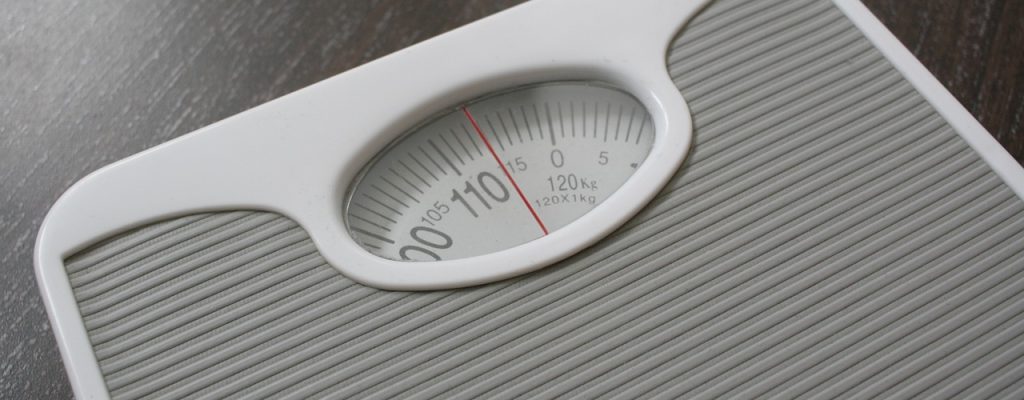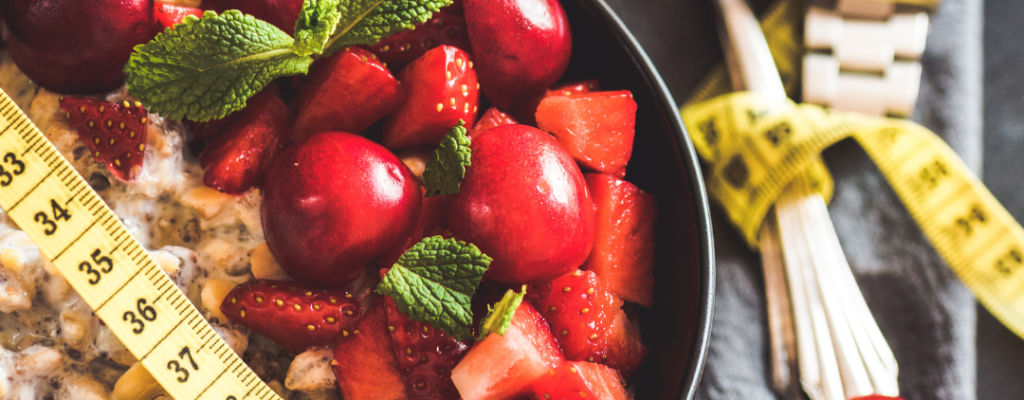Understanding Weight Loss vs. Fat Loss: What Your Scale Isn't Telling You

Standing on that scale again? We see this every day at Hubble Fitness.
Picture this: You’ve eaten clean all week, your workouts have been fantastic, and you’re feeling amazing. But the scale doesn’t budge—not even a little. Isn’t it frustrating?
Let us share something that changes everyone’s fitness perspective. Recently, we worked with Rakhi, one of our members. She was almost in tears because her weight hadn’t changed in three weeks. But here’s the plot twist – her clothes were looser, her energy was through the roof, and she looked visibly leaner. How was this possible?
The truth is that we've all been chasing the wrong number.
Your body isn’t just a number on a scale. It’s way more interesting than that. Think of it as an intriguing puzzle where weight is just one tiny piece. The real story? It’s about fat loss, not weight loss. And yes, there’s a huge difference!
At Hubble Fitness, we see this confusion daily. We have helped many clients break free from the scale’s tyranny. We’re sharing this knowledge because we don’t want you stuck in the same cycle of frustration.
In this post, we’ll share our insights about:
- Why your scale might be your biggest liar
- What’s happening when you’re “losing weight”
- Simple ways to track your real progress
- How to feel amazing in your fitness journey
No complex science talk. No confusing jargon. Just straight talk from fitness professionals who understand your journey.
Ready to discover what matters in your fitness journey? Let’s dive in together.
In this blog, we’ll unravel the science behind weight loss versus fat loss. We will help you understand why the number on your scale might be your least reliable indicator of progress. More importantly, we’ll show you how to focus on what matters – achieving a healthier body composition that not only looks better but functions better too.
Understanding Weight Loss vs Fat Loss in Depth: The Science Made Simple

Weight Loss: More Than Just Numbers
Let’s dive into what weight loss really means. Your body weight isn’t just one thing. It’s a combination of many elements. Water makes up most of your body weight, about 60-70%. Then there’s your muscle tissue, which keeps your metabolism running. You also have fat mass, which your body stores for energy. Don’t forget about glycogen – that’s the energy stored in your muscles. Even the food moving through your digestive system adds to your weight.
Your weight naturally goes up and down throughout the day. You’ll weigh less in the morning than in the evening – usually about 2-3 pounds difference. After a workout, you might drop a pound or two from sweat. Eat a meal, and you’ll gain a few pounds. Even your hormones can make your weight shift 3-5 pounds during different times of the month.
Fat Loss: The Strategic Reduction
Fat loss works differently. It’s more precise. When you lose fat, your body specifically targets stored fat while keeping your muscle safe. During proper fat loss, your body breaks down fat cells through a process called lipolysis. Your metabolism stays strong because you’re keeping your muscle tissue. Your body also gets better at using insulin, which helps manage your blood sugar.
You’ll notice changes in how you look. Your waist gets smaller. Your muscles become more visible. Your body shape changes, even if the scale doesn’t move much. Clothes fit differently, and you might see more muscle tone.
The Biology Behind It
Here’s what happens inside your body during fat loss. Your fat cells don’t disappear – they shrink. Your body turns stored fat into energy it can use. Your hormones, like leptin, adjust to these changes. The best part? Your metabolism keeps working efficiently because you’re not losing muscle.
Think of weight loss like turning down all the sound on a stereo. Fat loss is more like adjusting just the bass – it’s targeted and specific.
The Important Differences
Weight loss affects your whole body at once. It often includes losing some muscle, which isn’t great. The changes can be temporary, and while they happen quickly, they’re not always helpful for your metabolism.
Fat loss, however, focuses just on excess fat. It protects your valuable muscle tissue. The changes last longer, though they take more time to see. Your body works better because you’re losing fat while keeping muscle.
Here’s an interesting fact: Every pound of muscle burns 6-10 calories each day, even when you’re resting. Fat only burns 2-3 calories. That’s why keeping muscle while losing fat helps you stay healthy long-term.
parts. Understanding these pieces helps you see the bigger picture of your health.
What Really Makes Up Your Body Weight?
Let’s break down your body weight into its basic parts. Understanding these pieces helps you see the bigger picture of your health.
Muscle Mass: Your Body's Power Engine
Your muscles are like your body’s engine. They don’t just help you move – they burn calories all day long. Even when you’re sleeping, your muscles are working. They make up about 30-40% of your total weight.
Think about a car engine. The bigger and better maintained it is, the more efficiently it runs. Your muscles work the same way. More muscle means your body burns more calories naturally.
Fat: Two Types, Two Different Jobs
Your body fat isn’t all the same. You have two kinds of fat, and both matter.
Essential fat is like your body’s safety system. Women need about 12-15% essential fat, while men need 2-5%. This fat protects your organs and keeps you healthy. You can’t (and shouldn’t) lose this fat.
Storage fat is different. It’s like your body’s savings account for energy. This is the fat that builds up when we eat more than we need. It’s also the fat most people want to reduce
Water: Your Body's Main Ingredient
Water is your body’s biggest component. It makes up 50-65% of your weight. That’s why your weight can change so much in a single day.
Your water weight changes when:
- You drink or eat
- You exercise and sweat
- You eat salty foods
- The weather is hot
- Your hormones change
Bone Density
Your bones make up about 15% of your body weight. Think of them as your body’s framework. Strong bones don’t just support you – they also store important minerals.
As you age, keeping your bone density becomes more important. Exercise, especially strength training, helps keep your bones strong.
Organ Weight
Your organs make up about 10-12% of your body weight. Your liver, brain, heart, and other organs stay pretty much the same weight throughout your life. They’re the constant workers keeping you alive.
Why This Matters For Your Health
Understanding these components helps you make better health choices. When you lose or gain weight, you’re not just losing or gaining one thing. You’re changing a complex system.
For example, if you lose weight too quickly, you might lose muscle instead of fat. That’s why crash diets often backfire. They can make you lose the wrong kind of weight.
Why Your Scale Might Be Lying to You

Let’s talk about why that number on your scale isn’t telling you the whole truth. Understanding this might change how you think about your progress forever.
Your Weight Does a Daily Dance
Your body weight changes all through the day. It’s completely normal. Here’s what happens:
Morning weight is usually your lowest. By evening, you might weigh 2-5 pounds more. This isn’t fat gain – it’s just your body doing its normal thing.
Think about everything that affects your daily weight:
- That glass of water you just drank? That’s a pound right there
- Had a salty dinner? Your body holds extra water
- Just finished a workout? You might be lighter from sweat
- Ate a big meal? That food adds temporary weight
Water: The Weight Shifter
Your body’s relationship with water is fascinating. Water weight can change quickly and dramatically.
Hot weather makes you hold more water. Surprised? Your body keeps extra water to help you stay cool. Salty foods make you retain water too. Even stress can make your body hold onto more water.
A tough workout can make you lose 2-3 pounds of water. But that weight comes right back when you rehydrate. That’s healthy and normal.
Muscle and Fat: The Weight Mystery
Here’s something that surprises most people: Muscle is denser than fat. What does this mean? A pound of muscle takes up less space than a pound of fat.
Picture this: Two people weigh exactly 150 pounds. One exercises regularly and has more muscle. The other doesn’t exercise and has more fat. They weigh the same, but they look completely different.
This is why you might:
- Look leaner but weigh more
- Fit in smaller clothes at a higher weight
- Feel stronger but see no scale change
The Real Story Behind Fat Loss

Let’s uncover how your body actually burns fat. No fancy terms, no confusing science – just clear facts that will help you understand your body better.
How Your Body Burns Fat
Think of fat cells as tiny storage units. When you need energy, your body opens these units and uses what’s inside. But here’s the catch – your body only opens these units when it really needs to.
The process happens naturally. First, your body looks for quick energy from recent meals. When that runs out, it checks its emergency sugar stores in your muscles and liver. Only then does it turn to fat stores. Your body breaks down this fat into energy you can use. This happens all over your body, not just in one spot.
The Truth About Calorie Deficit
You’ve probably heard “eat less, move more.” There’s truth to this, but it’s not the whole story.
A calorie deficit simply means eating less than your body needs. Yet not all deficits work the same way. If the deficit is too small, changes happen very slowly. Make it too large, and your body fights back by slowing down your metabolism. The key is finding the right balance.
Most people do well with eating about 500 calories less than they need each day. This creates enough of a deficit for fat loss without stressing your body. It’s like turning down your food volume just enough – not too little, not too much.
Hormones: Your Body's Control Center
Your hormones work like messengers in your body. They control everything from hunger to fat storage. Insulin manages your blood sugar and tells your body when to store fat. Cortisol, your stress hormone, can make fat loss harder when it stays high. Leptin signals when you’re full, while ghrelin tells you when you’re hungry.
When these hormones work together well, fat loss becomes easier. Stress, poor sleep, and crash diets can throw these hormones out of balance. That’s why taking care of your whole body matters so much.
Better Ways to Track Your Fitness Journey
Let’s explore how to measure your progress beyond just stepping on a scale. Understanding different measurement methods helps you see the whole picture of your transformation.
Progress Photos
A picture truly tells a thousand words when it comes to body changes. Stand in the same spot, wearing similar clothes, at the same time of day. Take photos from the front, side, and back. These visual records often show changes in your scale misses.
Many people notice changes in their progress photos before seeing different numbers on the scale. Your body might be changing shape while maintaining the same weight. Photos capture these transformations in a way numbers cannot.
Taking Body Measurements
A simple measuring tape can tell an amazing story. Measure your chest, waist, hips, arms, and thighs. Write down these numbers or keep them on your phone. Check again every few weeks.
Remember to measure in the same spots each time. Small changes in position can affect your readings. Morning measurements, before eating, tend to be most consistent.
The Story Your Clothes Tell
Lorem ipsum dolor sit amet, consectetur adipiscing elit. Ut elit t
Your favorite jeans might be your most honest fitness tracker. Clothes don’t lie about changes in your body shape. That shirt that used to be tight around the arms now fits perfectly. Those pants that were snug now need a belt.
Pay attention to how your clothes feel. Notice changes in how they fit around different parts of your body. These daily observations often tell you more than any measurement tool.
Smart Strategies for Lasting Fat Loss

Let’s talk about what really works for fat loss. No fad diets or quick fixes – just proven approaches that stand the test of time.
Nutrition That Makes Sense
Good nutrition doesn’t mean perfect eating. Start with simple changes that last. Fill your plate with whole foods like vegetables, lean proteins, and healthy fats. These foods keep you satisfied longer and give your body what it needs.
Think of food as fuel for your body. Eating regularly throughout the day keeps your energy steady. Include protein, carbohydrates, and healthy fats in your meals. When you eat matters too – having regular meal times helps your body find its rhythm.
Drink water throughout your day. Sometimes thirst feels like hunger. A glass of water before meals helps you eat mindfully. Coffee and tea are fine, but water should be your main drink.
Balanced Training: The Complete Approach
Integrated fitness transforms your results. By combining strength training, cardio, yoga, and flexibility work, you create a body that’s not just leaner but more functional and balanced. This comprehensive approach builds muscle while burning fat, improves your cardiovascular health, and enhances your mobility all at once.
You don’t need complicated routines. A well-designed workout might include compound movements like squats and pushups for strength, flowing sequences for flexibility, and interval training for cardiovascular benefits. This integrated approach gives you more benefits in less time. Your body responds best to this variety, becoming stronger, more efficient, and more resilient.
Start with 3-4 balanced sessions each week that incorporate different elements. One day might emphasize strength with flexibility finishers, while another focuses on cardio with strength intervals. This varied approach keeps your body adapting and your mind engaged. The result is a body that not only looks better but moves and feels better too.
Protein: The Building Block
Protein helps preserve muscle while you lose fat. It keeps you feeling full and takes more energy to digest than other nutrients. Include protein in every meal and snack.
Good protein sources come from both animal and plant foods. Eggs, fish, chicken, beans, and lentils all work well. How much protein you need depends on your activity level and goals. Most people benefit from having some protein at every meal.
Sleep: Your Recovery Time
Sleep affects everything – your hunger, your cravings, your energy for exercise. Your body needs this time to repair and regulate hormones. Poor sleep makes recovery and fat loss harder.
Aim for consistent sleep times. Going to bed and waking up at similar times helps your body find its natural rhythm. Create a calm bedroom environment. Keep it cool, dark, and quiet. Put phones away before bedtime.
Managing Daily Stress
Stress can derail your fat loss efforts. High stress leads to poor food choices and skipped workouts. It also increases cortisol, which can make your body hold onto fat.
Find stress management techniques that work for you. Maybe it’s taking a walk, reading, or spending time with friends. Deep breathing helps in stressful moments. Regular exercise itself helps manage stress.
Avoiding Common Fat Loss Pitfalls
Let’s talk about mistakes that can slow down your progress. Understanding these common pitfalls helps you stay on track and achieve better results.
The Cardio Trap
Many people think endless cardio is the answer to fat loss. They spend hours on treadmills and bikes, hoping to burn more fat. While cardio has its place, too much can work against you.
Excessive cardio can make your body adapt and burn fewer calories over time. It might also break down muscle tissue when overdone. Instead, mix different types of movement. Include both high and low-intensity activities. Three to four cardio sessions per week is often enough when combined with other forms of exercise.
The Problem with Severe Restrictions
Cutting calories too low seems like a fast track to results. Your body thinks differently. When you eat too little, your metabolism slows down to conserve energy. You might feel tired, hungry, and irritable.
Very low-calorie diets often lead to quick weight regain. Your body needs enough fuel to function well. Moderate calorie reduction works better for lasting results. You should still feel energetic and satisfied while losing fat.
Overlooking Strength Training
Many people, especially women, worry that strength training will make them bulky. This fear leads them to skip weights altogether. Without strength training, you might lose muscle along with fat.
Strength training shapes your body and boosts your metabolism. It helps maintain muscle while losing fat. This gives you better definition and makes daily activities easier. Remember, muscle takes up less space than fat, even though it weighs more.
Scale Obsession
Watching the scale too closely can be discouraging. Your weight naturally fluctuates throughout the day and week. Water retention, muscle gains, and hormonal changes all affect the number you see.
The scale tells only part of your story. Some weeks your weight might not change even as your body composition improves. Judge your progress by how your clothes fit, your energy levels, and your strength gains too.
The Quick Fix Mindset
Looking for fast results often leads to unsustainable methods. Crash diets, detoxes, and extreme workouts might show quick changes. These results rarely last because the methods are too hard to maintain.
Real change takes time. Your body needs time to adapt to new habits. Focus on building sustainable practices you can maintain long-term. Small, consistent actions create lasting results.
Inconsistent Habits
Jumping from one diet to another confuses your body. The same goes for constantly changing workout programs. Your body needs time to adapt to new routines before they become effective.
Pick a reasonable approach and stick with it. Give your plan enough time to work. Make adjustments based on your results, but avoid complete overhauls every few weeks.
Not Planning for Real Life
Perfect eating and exercise plans often fall apart in real life. Work stress, family obligations, and social events happen. Having no flexibility in your approach sets you up for frustration.
Build habits that bend but don’t break. Have backup plans for busy days. Know how to make good choices in different situations. This flexibility helps you stay consistent over time.
Creating Lasting Changes for Fat Loss Success

Let’s explore how to make fat loss a natural part of your lifestyle rather than a temporary fix. Understanding sustainable approaches helps you create lasting results.
Setting Goals That Make Sense
Your goals shape your journey. Aiming to lose 10 kilos in a month sets you up for disappointment. Instead, focus on what you can control today. Eating more vegetables, drinking water, or walking daily are goals you can act on right now.
Think beyond the numbers on your scale. Consider goals like having more energy, sleeping better, or feeling stronger. These improvements often lead to fat loss naturally. They also keep you motivated when scale changes slow down.
Understanding Real Timelines
Your body changes at its own pace. Healthy fat loss typically ranges from half a pound to two pounds per week. This rate allows your body to adjust while maintaining muscle mass. Faster loss often means losing water and muscle instead of just fat.
Progress rarely follows a straight line. Some weeks bring noticeable changes, while others seem to stand still. This pattern is normal. Your body goes through cycles of change and adaptation. Trust the process and stay consistent.
Making Lifestyle Changes Stick
Quick fixes fail because they fight against your natural habits. Real change comes from small adjustments you can maintain. Start with one or two changes and practice them until they feel normal. Then add another.
Consider how changes fit into your daily life. A meal plan that requires hours of preparation might work for a week but fails long-term. Find ways to make healthy choices convenient. Prepare food in advance, keep healthy snacks handy, and plan workouts that fit your schedule.
Building Strong Habits
Good habits make healthy choices automatic. They remove the need for constant willpower. Start your day with protein. Take a walk after dinner. Pack tomorrow’s gym bag tonight. These small actions add up over time.
New habits need time to stick. Give yourself at least a month to establish each new routine. Be patient with yourself when you slip up. Return to your habits without guilt. Consistency matters more than perfection.
Managing Social Situations
Life includes celebrations, travel, and dining out. Learning to navigate these situations helps you maintain progress. Choose restaurants with healthy options. Eat slowly and mindfully at parties. Focus on enjoying people rather than just food.
Share your goals with friends and family. Their support makes success easier. Find ways to socialize that don’t always center around food. Maybe suggest a walk instead of another coffee shop meeting.
Planning for Maintenance
Reaching your goal weight isn’t the end of the journey. Your body needs similar care to maintain its new shape. Many habits that helped you lose fat will help you maintain your results.
Stay aware of how your clothes fit and how you feel. Small adjustments keep you on track. Regular exercise and mindful eating become part of your lifestyle rather than temporary measures.
Adapting to Life Changes
Life brings different seasons and challenges. Your approach needs to flex with these changes. Having a baby, changing jobs, or moving to a new city might require adjusting your routines.
Build a foundation of basic habits you can maintain in any situation. Know how to modify your approach when life gets busy. Focus on what you can do rather than what you can’t.
Understanding Your Path to Success
The journey of fat loss brings lasting changes when you understand the fundamentals. Let’s bring everything together and help you take your first steps.
The Real Story of Body Change
Remember that weight loss and fat loss tell different stories. While your scale shows a simple number, your body goes through complex changes. Focus on building a stronger, healthier body rather than just seeing lower numbers.
Your body responds best to gradual, consistent changes. It needs proper nutrition, regular movement, good sleep, and stress management. These elements work together to create lasting results. Think of them as pieces of the same puzzle – each one matters.
Taking Your First Steps
Start where you are today. Perhaps begin with drinking more water or adding an extra serving of vegetables to your meals. Take a 10-minute walk after dinner. Small actions create momentum for bigger changes.
Listen to your body’s signals. Notice how different foods affect your energy. Pay attention to how exercise makes you feel. This awareness helps you make better choices naturally.
We're Here to Help
At Hubble Fitness, we understand that everyone’s journey looks different. Our team of experts can help you create a personalized approach that fits your life. We offer nutrition guidance, workout plans, and ongoing support to keep you moving forward.
Ready to start your transformation? Schedule a consultation with our team. We’ll discuss your goals, assess your current habits, and create a plan that works for you. Visit our website or call us today to learn more about our programs.
Remember, your journey to better health starts with a single step. Let us help you take that step with confidence.
Contact us at hubblefitness.com to begin your transformation. Your future self will thank you for starting today.
